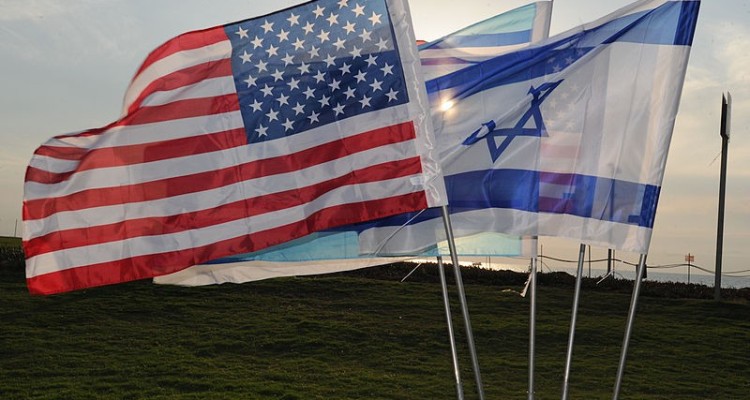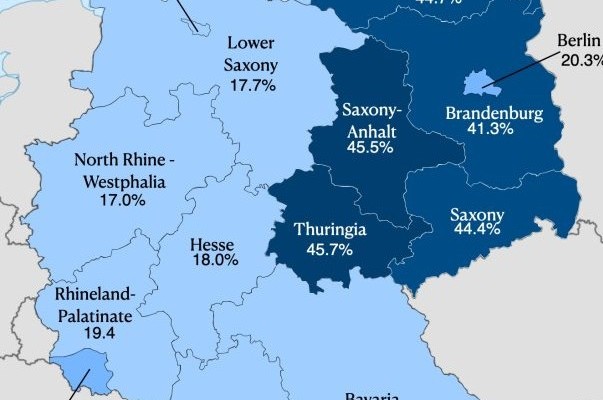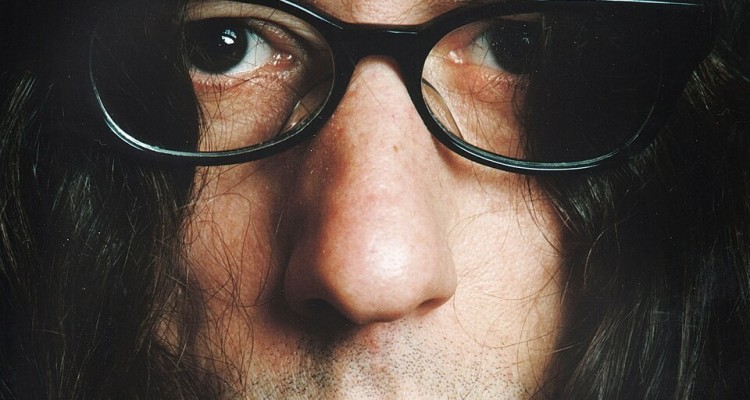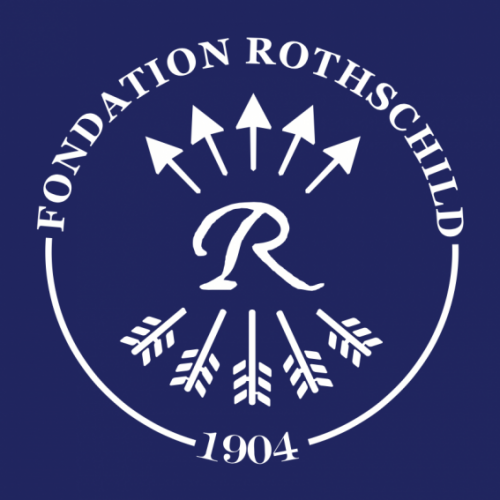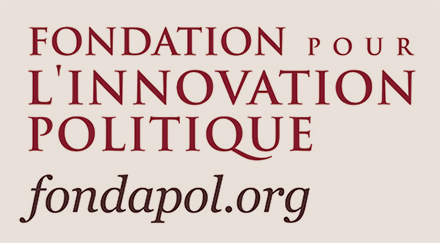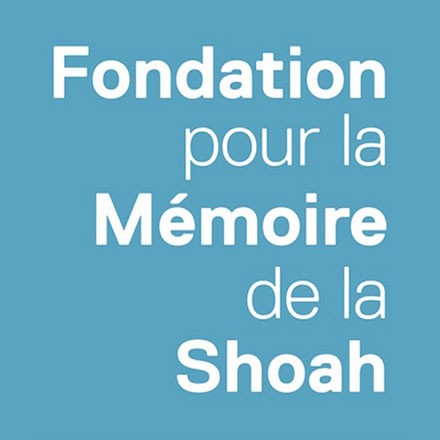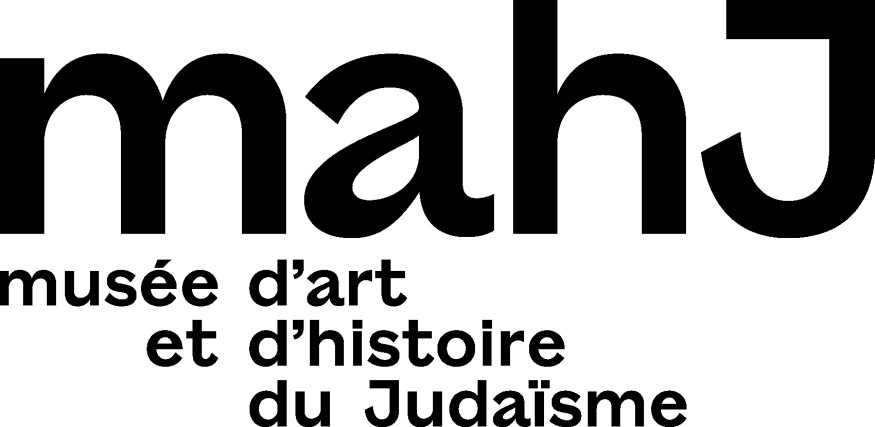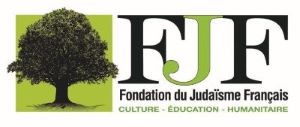Russia’s unbearable aggression against Ukraine is combined with the fact that the country under attack has a problematic relationship with its past, to say the least. The history of its national construction and its memory of the Shoah sometimes violate Jewish memory. Boris Czerny examines the place accorded to the Shoah in Ukraine, and asks what it means in the debate surrounding the country’s eventual integration into the European Union.
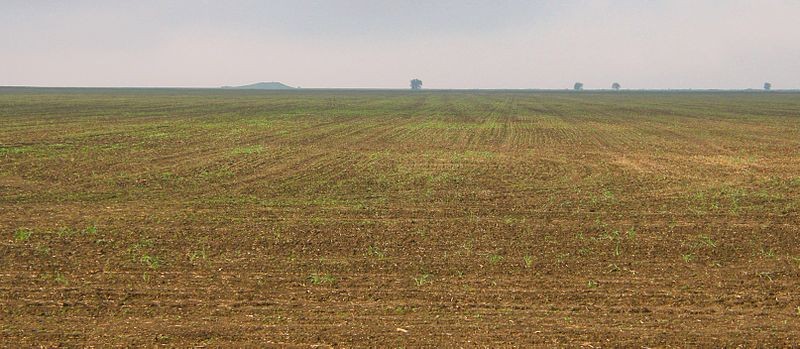
In his documentary, Slava Ukraini, released on February 22, 2023, one year to the day after the beginning of the war launched by Russia against Ukraine, the philosopher Bernard-Henri Lévy shows the struggle of Ukrainian soldiers, who according to him are fighting not only for their homeland, but also for the victory in the East of the humanist and democratic values that constitute the foundation of Western societies, and European societies in particular. For Bernard-Henri Lévy, who went to the military in Kiev, Kharkiv, Izioum, Bahkmout, Sloviansk, Lyman or Odessa to shoot his film, “the time has come (for the West) to deliver more weapons to Ukraine in order to lead to capitulation a terrorist master, (Putin) who threatens us all.” A Putin victory would mean the victory of an extremist ideology based on force and anti-democratic violence.
While recognizing Putin’s responsibility in the war that pits Russia against Ukraine today, lawyer Arno Klarsfeld, in response to Bernard-Henri Lévy’s film, castigated a few days later the responsibility of NATO in the conflict and called on Ukraine to look back at its past. He referred in particular to the rehabilitation in Ukraine of the politician and leader of the organization of Ukrainian nationalists, OUN-B, Stepan Bandera, who collaborated with Hitler’s Germany in the hope of founding an independent Ukraine and was directly involved, with his men, in the massacres of thousands of Jews. Still according to Klarsfeld, contrary to the assertions of “some”, Ukraine should sort out the choice of its national heroes, and the support given by Nato and the European Union to Ukraine should be reconsidered in the light of the danger of a third world war but also of the glorification in Ukraine of war criminals who participated in the massacres of thousands of Jews[1].
In their speech, Bernard-Henri Lévy and Arno Klarsfeld emphasize the role and place of Europe. For the first, Bernard-Henri Lévy, the latter has a duty towards Ukraine: that of defending it against the totalitarian and anti-democratic danger that Russia represents. The European Union must consider Ukraine as a shield against Russia and, therefore, integrate it into the community of European countries. Arno Klarsfeld, for his part, believes that Nato and the United States have their share of responsibility in the Russo-Ukrainian conflict and that a Ukraine glorifying genocidaires has no place in the European Union[2]. Like the British historian Tony Judt, Klarsfeld believes that the recognition of the participation of a state, Ukraine in this case, in the extermination of the Jews is the “(indispensable) ticket into modern Europe and the European Union.[3]”
The Shoah occupies a certain place in the debate. It is central for Arno Klarsfeld, it is ancillary for Bernard-Henri Lévy, who is ready to sign a blank check to Ukraine. This place underlies a certain conception of Europe as a union of nations bearing liberal values. In order to provide some answers as to how Ukraine embodies or does not embody these values, it seems important to first return to the place given to the Shoah in Ukraine today, before exposing later and in conclusion to what extent the superficial knowledge of the extermination of the Jews and the role held by Ukrainian nationalists in this process echoes the positions in this field of Poland.
The inclusion of Bandera in the Ukrainian national narrative
In its fight against Russia, the Ukrainian government launched a major nationalist propaganda campaign to unite the people around the idea of defending the Ukrainian land, its past, its history, its culture and its language. And for good reason, since the beginning of the conflict, the Russian government has developed an anti-Ukrainian propaganda which had the effect, in Ukraine, of exacerbating a strong nationalist feeling in reaction. The Russian argument is based mainly on the denial of the very existence of a Ukrainian nation and the need to correct a mistake of history, namely the formation and existence of an independent Ukraine in 1991. The claims of Ukrainian nationalists, according to the Putin government, are a continuation of the policy of collaboration with the Nazis conducted during the Second World War by the Ukrainian Insurgent Army (UPA) and the Organization of Ukrainian Nationalists (OUN-B), one of whose main leaders was Stepan Bandera. The “special military operation” also has a messianic dimension from the Russian point of view. It is not only a question of preserving territories inhabited by Russian-speaking subjects, such as the Donbass, but of saving Europe from the resurgence of Nazism in Europe and the moral decay gnawing at the Western democracies.
In reaction to this Russian-led denial of the existence of a Ukrainian nation, Ukrainians and their leaders at the highest level of the state have developed a propaganda directed against Putin, but also against the entire Russian population, described as “Russians” – a contraction of “Russian” and “racist” – as well as against the Russian culture and language. This process of rejection of the “Russian world” has been accompanied by a re-evaluation of the heroic figures structuring the history of the Ukrainian nation and representative of Ukrainian culture as a whole.
According to a study on “ideological markers of war” published by the Ukrainian polling institute Ratin, the popularity of the leader of the Organization of Ukrainian Nationalists has risen from 22% in 2012 to 74% today. In fact, the clearing of Bandera and other Ukrainian pronazi leaders of their compromise with the Nazi authorities began long before February 24, 2022 and the start of the war. During his years as head of the Ukrainian state, from 2005 to 2010, Viktor Yushchenko initiated a campaign to rehabilitate figures of Ukrainian nationalism by granting them the title of heroes of Ukraine. This decision was part of a process of structuring a national narrative that differed from that of Moscow, and opposed it also in the field of language and the use of Russian. The linguistic nationalism aimed at imposing Ukrainian at the expense of Russian, including in traditionally Russian-speaking regions, has been concretized in recent years by a vast campaign of “derussification”. Most recently, a law on “guaranteeing the use of Ukrainian as the national language of the Ukrainian state” has come into force, obliging the Ukrainian media to publish in Ukrainian any text originally written in a foreign language.
However, this provision does not apply to English, nor to all official languages used in the countries of the European Union, as well as to the language of the Crimean Tatars and other languages spoken on the territory of Ukraine. It does, however, apply to Russian[4].
This trend towards a cultural “Ukrainization” leading to the rejection of Russian, a “Ukrainization” that Petro Poroshenko, Zelensky’s political opponent in the 2019 presidential elections, had made the guideline of his policy, has become with the war a powerful background movement. The statements made in 2014 by Zelensky about the need to let the Russian-speaking population of Crimea and Donbass the opportunity to practice Russian, now seem outdated. Most recently, on April 22, 2023, Zelensky banned the naming of streets and other geographical sites with names glorifying Russian imperialist policy[5]. This ban comes after the one on limiting the broadcasting of Russian music by the media or in public places and the ban on the sale of books, magazines and newspapers from Russia, Belarus as well as the occupied territories of Ukraine.

In addition to the rehabilitation of Ukrainian nationalists and other personalities with a dubious past, such as Metropolitan Andre Cheptytsky, the composition of this narrative included, in 2006, the official recognition as genocide of the Holodomor, the “extermination by hunger” organized by the Soviet power of Stalin between 1932 and 1933, which was responsible for the death of millions of Ukrainians. In 2007, in a speech to the Knesset, President Yushchenko called on Israeli MPs and leaders to recognize the Holodomor as a genocide, comparable to that committed by the Nazis against the Jewish population. The French National Assembly adopted a resolution on March 29 recognizing the Holodomor as genocide, although historians remain divided on this issue. Some believe that the Soviet peasantry as a whole was affected by Stalin’s policies and not specifically or solely the Ukrainian people.
The question of the status of genocide attributed to this campaign of mass murder through hunger and confiscation of crops, raises the question of the coexistence of two genocides in Ukrainian historiography and the structuring of a national narrative generally developed from a base of invariants that are an anthem, a popular culture (folklore), a language, a territory, epic heroes, victories, but also a tragedy arousing both a thirst for revenge and a feeling of pride.
As the historian Anna Medvedovska points out in her thesis in Ukrainian on the place of the Shoah in Ukrainian public opinion between the end of the twentieth and the beginning of the twenty-first century, the refusal of some Ukrainian historians, in Ukraine itself and in the emigration, to critically examine the role of the nationalist movement in the extermination of the Jews often leads to the obliteration of the Jewish and Gypsy tragedy (this people without a written memory testifying to its extermination is generally not mentioned), and to its substitution by that suffered by Ukrainians. Anna Medvedovska mentions as proof the titles of numerous publications referring to the “forgotten Holocaust”, or to the “Ukrainian Holocaust”, as well as the project of writing a study on the Holodomor which would take as a model Raul Hilberg’s work on the destruction of the Jews of Europe. At the same time, the assertions about the participation of a large number of members of the NKVD of Jewish origin in the implementation of the plan of organized famine in the Ukraine makes it possible to shift the cursor and make the Jews the executioners and the Ukrainians the victims. The study of this role reversal is at the center of the book by the Israeli-American historian Omer Bartov on the disappearance of the traces of the Jewish presence in Galicia. During his tour of Galicia in the early 2000s, Bartov noted the ubiquity in the memorial landscape of monuments to the glory of the nationalist movement in general and Bandera in particular, and the absence of Jews and references to their past presence in this part of western Ukraine[6]. Absent or poorly represented in the material landscape, Jews and the Holocaust are not a major theme in Ukrainian academic and scholarly research. The leading journal Ukraïnskij ìstorichnij zhurnal has, to date, published only a very limited number of articles on the Holocaust and the Jewish presence in Ukraine.
The understanding of the structuring of the Ukrainian national narrative, especially since its independence, cannot be limited to a simplistic reading that makes today’s Ukrainians the descendants of yesterday’s anti-Semitic nationalists. According to Le Monde journalist Thomas d’Istria, Bandera and the nationalist symbols would today, in the context of the war, only be “offbeat emblems” wielded ironically by Ukrainian youth on social networks in order to better deflect Russian propaganda qualifying Ukrainians as Banderists[7]. The Ukrainians would somehow be “bandit-like” out of provocation and defiance. The explanation may seem specious. It is, however, the only acceptable one unless one gives credence to Putin’s speeches justifying the war against Ukraine by the need to “denazify” that country. For Ukraine is not a Nazi country, but a democratic country aspiring to join the European Union, a country where elections are held freely and where freedom of expression is real. But above all, contrary to Russia where a heroic version of the Second World War called “Great Patriotic War”, prohibiting or limiting any in-depth research on the Shoah, is imposed by law, in recent years a certain willingness to work on the memory of the past, especially on the period of the German occupation, has been manifested in Ukraine.
The role of Jewish memory in the Ukrainian landscape: shifting places of memory
Since 2012, January 27 has become the “Day of Genocide and Prevention of Crimes against Humanity.” September 29, meanwhile, is marked by demonstrations at the site of Babi Yar, even though this date is not officially included in the Ukrainian calendar. The media also participated in making the Ukrainian public aware of the various aspects of the German occupation. For example, in June 2016 the Ukrainian television channel 3S TV devoted a program in its series “Ideological Choice” to Ukrainian national demands during World War II and the participation of Ukrainian nationalists in the extermination of Jews. In a similar vein, also in 2016, the Ukrainian television channel ZIK invited historian Tomasz Gross to explain his understanding of collaboration and to discuss the extent to which his approach to the Holocaust in Poland could be applied to Ukraine. Finally, and perhaps most importantly, the numerous monuments to Jewish victims, erected since 1991, inscribe the Shoah in the Ukrainian landscape, even if the focus on the existence of places of memory has somewhat obscured the questions of sharing this memory.
The case of Babi Yar, the ravine where on September 29 and 30, 1941, more than 30,000 Jews were exterminated by the Nazis, and where, subsequently, gypsies and other representatives of the Ukrainian population, members of the nationalist militia as well as Communist resistance fighters were also murdered, has been the subject of numerous studies, both in the West and in Ukraine. In Babi Yar a first monument was erected in 1976. After the fall of the USSR, in 1991, nearly thirty monuments were built in memory of gypsies and Ukrainian nationalists, Orthodox priests as well as the resistance fighter Tetiana Markus or the soccer players who faced a German team during the war, prisoners of the nearby camp of Syrets. This mosaic of monuments, as Lisa Vapné writes in K.[8] quoting Barbara Martin “leaves free play to a plurality of memories, which engage in a competition whose stake is the appropriation of a symbolic as well as physical space.[9]”
Still according to Lisa Vapné “today, it is no longer the absence of monuments commemorating these dead that raises questions, but rather the conflict around the latest projects that have been proposed, and in particular the most recent one, the ambitious project unveiled from 2016 of the Babi Yar Holocaust Center (BYHMC).”
The terms “conflict” and “competition” are accurate, even if not all “competitors” are on the same starting line and competing with the same equipment. Memory cannot find a similar extension in the present for Ukrainians, Jews and Roma, even if each of these groups has monuments recalling the extermination of a significant number of its own during the Second World War. The Shoah definitively destroyed the multifaceted character of Jewish life in Ukraine and the USSR, of which Kiev was still a stronghold in the 1930s. The press and publishing houses were very dynamic and the numerous schools and clubs were evidence of an intense Jewish life that was closed down by decision of the Soviet authorities before the beginning of the Second World War. Today, because of the lack of links between society and the synagogue, Jews are condemned to carry their memory alone. In spite of their relatively large number, amounting in 2016, according to data from the World Jewish Congress, to between 56,000 and 140,000, they no longer form a group likely to generate real prospects for the future and to constitute a milieu conducive to artistic and cultural renewal, and thus to “live” a memorial heritage which has great difficulty in acquiring a certain visibility beyond the limits of community centers and the restricted circle of researchers, and this in spite of a few television broadcasts, as we have seen above.
Two recent books, published in Israel and Ukraine respectively, contain the census of monuments erected in memory of the victims of the Shoah. The first concerns the steles and other monuments erected in the Soviet era, independent of the authorities, by survivors of Jewish communities in the post-Soviet space[10]. Challenging a widely held view of Soviet Jewish silence and passivity in the face of the development of an official narrative that ignores the fate of civilian victims during World War II, and especially that of Jews, the author, Arkady Zelster, shows that of the 2,600 massacre sites listed, 773 include a monument dedicated to Jewish victims. Their erection was the result of private initiatives and of Jewish communities that organized fundraising for this purpose. Their number varied according to the period and the attitude of the local authorities to requests for commemoration from Jewish communities. The first period, from the liberation of the occupied territories to the rise of the struggle against the cosmopolitans in 1947, was marked by important demonstrations of collective remembrance, such as at Babi Yar, which did not always lead to the erection of monuments. The second period, that of the Khrushchev years, was characterized by a relative liberalization on the part of the authorities and a renewal of identity among Soviet Jews, some of whom began to fight for the freedom to emigrate and for recognition of the Shoah. They were joined in their efforts by non-Jewish Russian intellectuals, the most famous case being the writing of the poem Babi Yar by Yevgeny Yevtushenko in the 1960s and the composition of the Thirteenth Symphony by Dmitri Shostakovich. After the Six-Day War in 1967 and until the beginning of Perestroika in the late 1980s, monuments indicating the Jewish origins of the victims were very rare and, on the contrary, some “ethnic” epitaphs or Jewish symbols, such as stars of David, were removed from the headstones.
With the attainment of independence in 1991, the voluntary invisibilization of the identity of the civilian (Jewish) victims of the Shoah came to an end. As a recently published book shows, in the 1990s and early 2000s, numerous monuments bearing the indication of Jewish origins, were erected throughout Ukraine[11]. Despite some shortcomings (including unstudied regions), this book offers an interesting overview of the many memorial sites that have emerged in recent years, such as in Dnipro, for example. This city in eastern Ukraine, which was successively called Yekaterinoslav during the tsarist era and Dnepropetrovsk between 1926 and 2016, is a traditional center of Jewish life in Ukraine. Located within the boundaries of the Residential Zone, it was home to a large Jewish community accounting for nearly 35% of the city’s total population according to the 1897 census. In the 1920s and 1930s, the city attracted a large number of Jews who wanted to participate in the building of communism. Due to the presence of heavy industry and enterprises of the military-strategic complex, Dnipro was in Soviet times a “closed” city and therefore forbidden to foreigners, but the living and supply conditions were better than in many other cities in the USSR.
In this city, as in Kiev, the memorial landscape is blurred by the presence of several monuments dedicated to the “victims of Nazi barbarism.” Like in Kiev, during the entire Soviet period, no sign or inscription indicated the Jewish origin of the majority of the victims, especially the 10,000 men, women and children who were murdered on October 13, 1941. It was not until the beginning of the 21st century, and more precisely in 2001, that a black granite stele was erected with texts in Ukrainian and Hebrew and decorated with Tables of the Law and floral motifs. The decision to dedicate a monument to the Jewish victims was made by the Jewish community of Dnipro. Thanks to funding and donations from local businessmen of Jewish origin, in 2012 the city’s main synagogue was restored, an impressive community center, the Menorah, a study center, Tkuma, and a museum, the first museum dedicated solely to the Holocaust in Ukraine, were built. This picture might appear to be clear evidence of the inclusion of the Holocaust and the Jewish community more broadly in the Ukrainian landscape, in the truest sense of the word, if these various achievements were not solely the result of private, Jewish initiatives, without any real interaction with the public domain, the state and non-Jewish circles. According to the conclusions of a study carried out in 2004, a study concerning work on the Shoah by students from different large cities (Lviv, Poltava, Kharkiv), knowledge about the massacres of Jews differed according to the region, each of which had its own “history”. The author of this study nevertheless identified as a common characteristic of all the students their detachment from the Shoah, which they considered in their majority as a Jewish and only Jewish tragedy. Most of them made no mention of the pogroms, collaboration with the Nazis or the help given by non-Jews to Jews to save them from death. Their knowledge of Jewish-Ukrainian relations was extremely limited[12]. Ten years later, another historian, Viktoria Sukovata makes the same observation and points out that there are no chairs of Holocaust studies in Ukrainian universities and that the subject is not addressed in school and university curricula[13].

Ukraine in the footsteps of Poland?
Since the beginning of the conflict, voices in Kiev and in European capitals have been heard in favor of Ukraine’s rapid accession to NATO and the European Union. This call has resonated particularly strongly in Warsaw. Poland provides a great deal of military and humanitarian aid to Ukraine and welcomes many Ukrainians in exile on its soil. Bordering Ukraine, Poland sees it as the last bastion against a possible invasion of its soil by the Russian army, and the two countries share a common history marked by Russian domination beginning during the reign of Catherine II in the late 18th century and ending in 1989 with the success of Solidarność for Poland, and in 1991 for Ukraine. Both Ukraine and Poland are part of the “land of blood,” according to the formulation used by historian Thimoty Snyder to designate this territory where, between 1933 and 1945, nearly 14 million civilians were killed by Nazi Germany and the Stalinist Soviet Union.
The two nations, Ukraine and Poland, follow historical paths with many similarities, enough to envisage a common future in the European Union. In this respect, it is legitimate to wonder whether Kiev, which still only has the status of candidate to the European Union, a status obtained thanks to many partners and first and foremost that of Warsaw, will not adopt a “Polish” conception of Europe based on the specific character of each nation. This vision is opposed to that of other founding countries of the European Union, for whom Europe is understood as a superior community transcending cultural and civilizational differences.
In order to provide elements of an answer, we will resort to the notion of paratopia, which is used in the medical field and in linguistics. In medicine, paratopia designates a displacement, such as a dislocation or a hernia. According to the Fabula site, a site devoted to literary research that uses the definition of this concept elaborated by Dominique Mainguenau, paratopic locality is not the absence of place, but a difficult negotiation between place and non-place, a localization that comes from the impossibility of stabilizing oneself and can, as such, be assimilated to a “fault line”, a “caesura” that allows one to apprehend reality.
The examination of the political situation in Poland shows that knowledge of the Shoah and the recognition of national responsibility for the extermination of Jews and representatives of other nationalities, such as the Roma, have a paratopic value in the sense that they make it possible to apprehend a reality that goes far beyond the Jewish framework and the historical domain, and that relates in particular to a certain conception of the nation and the philosophical basis that underlies it.
Participants in the colloquium held in February 2019 at the École des hautes études en sciences sociales, a colloquium devoted to the “new Polish Holocaust history ecology,” will remember the kerfuffle caused by people presenting themselves as representatives of the Polish Church and the club of a Polish nationalist and Catholic right-wing weekly, Gazeta Polska. Vehemently claiming to be true Polish patriots, these people challenged questions about Polish participation in the Holocaust. These hateful demonstrations were reported in the Polish press, and on the evening news, public television showed photographs of four of the Polish participants – Jan Gross, Barbara Engelking, Jacek Meociak, and Jan Grabowski – as traitors to the Polish homeland. These attacks on the “new Polish school of Holocaust history” studying the grey areas of Polish compromise with the Nazis were carried out in the context of the advent of a nationalist and conservative government in Poland, which in 2018 enacted a law threatening researchers who “harm the image of Poland. Following international protests, the law was later withdrawn in its criminal part, but it remained in force in the civil part. This law, which brought Polish historiography back to a heroic and “healthy” account of the Polish resistance, “the most powerful in Europe”, was also accompanied by the introduction of legislation that went against a liberal policy and took the form, among other things, of restrictions on the right to abortion, the erosion of the independence of the judiciary or the establishment in 2019 of “anti-lgbt zones” in a hundred or so localities.
The victory in the legislative elections of the same year of the Law and Justice party (Pis), which has been in power continuously for seven years, placed Poland in an ambiguous situation in relation to the European Union. Internationally, the Pis was one of the main actors in the refoundation of the Visegrád Group (V4), which had existed since 1993 with Viktor Orban’s Hungary, the Czech Republic and Slovakia[14]. Since then, this group has taken positions opposing the European Commission on issues related to the reception of refugees, and more generally on the question of the non-preponderance, in their view, of liberal European principles over Europe’s Christian values. In Poland itself, the education reform presented in January 2022, which led to a strong centralization of the education system and the replacement of civic instruction courses by history courses in line with the vision of the Pis, was carried by the Minister of Education and Higher Education, Przemyslaw Czarne, who is known for his proximity to fundamentalist Catholic circles. His words about the need to defend the family against sexual depravity and LGBT circles are not different from Putin’s words about the decadent Western world.
This nationalistic and conservative discourse is inconsistent with the promises made by Poland, upon its entry into the European Union, in the field of respect for the rights of minorities.
Bernard-Henri Lévy or Arno Klarsfled?
Should we follow Bernard-Henri Lévy’s footsteps without hesitation in the certainty that the fate of Europe and the free world is at stake in Bakhmut and Lugansk? It is obvious that a Russian victory would give Putin the opportunity to extend his totalitarian pressure beyond the borders of the Russian Federation. It would deprive Ukraine of its right to independence and Ukrainians of the freedom to decide their present and future. It is also likely that Putin and his cronies would not stop at Ukraine and, in their desire to restore the “Russian world” to the borders of the USSR, would continue their murderous enterprise in Moldova and the Baltic states.
As a reminder, Putin has taken up and developed the idea of “Russian world” in many speeches, such as the one he gave in Moscow in 2018 on the occasion of the International Congress of fellow citizens living abroad. Considered in this sense the Russian world covers all territories where Russian is spoken and the defense of Russian speakers, as in the Donbass, is a sacred mission. This being said, Arno Klarsfeld’s objections cannot leave all people indifferent, Jews and non-Jews alike, who are sensitive to the tragedy of the Jews during the Second World War. The choice of Bandera as a national figure, even if it is ironic and out of place, and the use of signs reminiscent of Nazi symbols, are at best in bad taste, at worst a cynical expression of a wilful ignorance of history. But this debate is not limited to the Shoah and its interpretation, even if it remains the absolute revelation of the conception of relations with the Other, of the acceptance of national, cultural and linguistic differences. In this respect, the banning of Russian in certain higher education establishments, such as the Mohyla University in Kiev, the drastic reduction in the broadcasting of Russian music in the public space and the ban on the import of books published in Russia appear to be signals of Ukraine’s swing towards cultural nationalism. A blank check given to Kiev in the context of its application to join the European Union would have important consequences for the conception that the countries already members of the European Union wish to give to their union in the future. Two paths are possible. The union could continue to develop as an association of countries linked together by ever closer ties, regulated by ethical principles that emerged after the Shoah and “never again” and that would be imposed on Kiev as a prerequisite for its integration. The European Union could also become a grouping of countries with different cultures united essentially by a common legitimate fear of Russia.
Boris Czerny
Boris Czerny is a professor at the University of Caen. His research focuses on the Jewish world in Russia (19th and 20th centuries)
Notes
| 1 | Arno Klarsfeld,: “if Ukraine wants to enter the EU, it must find other heroes”. https://www.affiches-parisiennes.com/arno-klarsfeld-si-l-ukraine-veut-rentrer-dans-l-ue-elle-doit-se-trouver-d-autres-heros-121655.html |
| 2 | Interview with Arno Klarsfeld in Causeur, March 14, 2023, https://www.causeur.fr/arno-klarsfeld-une-ukraine-qui-glorifie-les-genocidaires-na-pas-sa-place-dans-lue-256347 |
| 3 | Tony Judt. Postwar. A History of Europe since 1945, New York: Penguin Books, 2006, pp. 233-240. |
| 4 | Meduza newspaper of January 16, 2022 (in Russian) https://meduza.io/news/2022/01/16/v-ukraine-vstupil-v-silu-zakon-kotoryy-zapreschaet-izdavat-pechatnye-smi-tolko-na-russkom-yazyke |
| 5 | Insider April 22, 2013, Zelensky banned the naming of public places or spaces with names glorifying Russian imperialist policy” (in Russian)” https://theins.ru/news/261186 (accessed on April 20, 2023) |
| 6 | Omer Bartov, Erased: Vanishing Traces of Jewish Galicia in Present-Day Ukraine, Princeton University, 2007. |
| 7 | Thomas d’Istria, “Stepan Banderaa, l’antihéros glorifié après l’agression russe,” Le Monde, 7 January 2023, https://www. lemonde.fr/international/article/2023/01/07/stepan-bandera-l-antihero-ukrainian-glorified-after-russian-aggression_6157009_3210.html (Accessed 15 March 2023) |
| 8 | Lisa Vapné, “Babi Yar: Which Monuments ?…“, K., September 29, 2021. |
| 9 | Barbara Martin “Babi Yar. La commémoration impossible,” Emulations n°12, 2018, p. 67-79. |
| 10 | Arkadi Zeltser. Unwelcome Memory: Holocaust Monuments in the Soviet Union. Jerusalem: Yad Vashem, 2018. |
| 11 | Kruglov A., Umanskij A., Ŝupak I. Holokost v Ukraine: rajhskomissariat “Ukraina”, gubernatorstvo “Transnistriâ”: monografiâ. 2-e izd., dopoln. Dnipro: Ukrainskij institut izučeniâ Holokosta “Tkuma”; ČP “Lira LTD”, 2021. 792 s |
| 12 | E. Ivanova, “Ukrainian High School Students’ Understanding of the Holocaust,” Holocaust and Genocide Studies , V. 18. No. 3. – Winter 2004, pp. 402 – 420. |
| 13 | Viktoria Sukovata, “Teaching Holocaust and Genocide Studies in Modern Ukraine: problems and perspectives,” The Holocaust in Ukraine: New sources and Perspectives, Center for Advanced Holocaust Studies, United States Holocaust Memorial Museum, pp. 199-211. |
| 14 | The Visegrád Group brings together Hungary, Poland and Czechoslovakia. The name originally referred to the alliance formed in 1335 by the kings of Bohemia, Poland and Hungary to fight against the House of Habsburg. The name was used again in 1991 at a summit of the heads of state or government of Czechoslovakia, Hungary and Poland. After the partition of Czechoslovakia and Czechia and Slovakia, the group associates four countries working within the EU for a strengthening of the identity of Central Europe and a rapprochement with Ukraine, Belarus and Moldova. |

